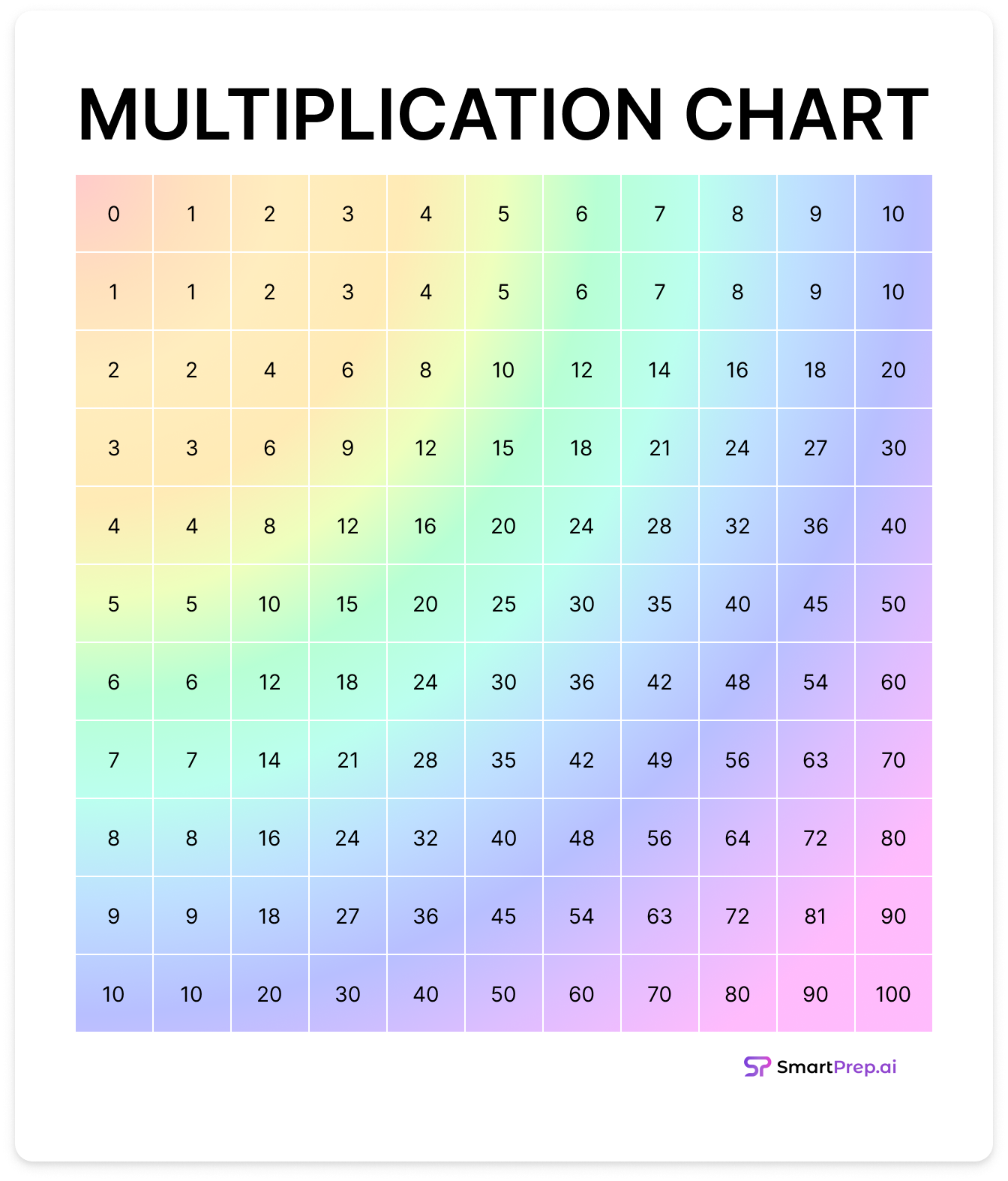- Published on
Mastering the Basics: The Power and Practice of the Multiplication Chart
A multiplication chart, also known as a times table, is a table used to define and visualize the products of two numbers. It's typically arranged in a grid format where the rows and columns represent the numbers being multiplied together. Each cell within the grid shows the product of the row and column headings.

Importance of Multiplication Chart for Students
- Foundational Skill Development: Multiplication is a basic arithmetic operation that forms the foundation for more advanced math concepts, including division, algebra, and geometry. Mastery of multiplication tables through the use of a chart can significantly ease the learning of these more complex areas.
- Enhances Speed and Accuracy: Regular practice with a multiplication chart helps students improve their speed and accuracy in mathematical calculations. This proficiency is beneficial not only in academic settings but also in everyday situations where quick mental calculations are required.
- Boosts Confidence: Being familiar with multiplication tables can boost a student's confidence in their math skills. Confidence is crucial in encouraging further exploration and learning in mathematics and related disciplines.
- Facilitates Problem Solving: Many problems in mathematics and real-life scenarios involve multiplication. A solid grasp of multiplication through the use of charts enables students to approach these problems more effectively and with greater ease.
- Saves Time: Knowing multiplication facts by heart saves time on tests and homework, allowing students to complete mathematical tasks more efficiently. This can be particularly advantageous during timed exams.
- Supports Higher-Level Math Learning: Concepts such as fractions, percentages, and properties of numbers often require strong multiplication skills. The multiplication chart helps in laying a solid groundwork for these topics.
- Encourages Independent Learning: With a multiplication chart, students can study and reinforce their math skills independently, fostering a habit of self-guided learning and inquiry.
- Improves Cognitive Skills: Learning and using a multiplication chart can enhance memory, attention to detail, and analytical skills, all of which are beneficial across all areas of study.
Easy ways to learn
- Chunking the Tables: Break down the multiplication tables into smaller sections. For example, focus on learning 2s, 5s, and 10s first, as these are generally easier and follow simple patterns.
- Use Rhymes and Songs: Many students find that setting multiplication facts to music or rhymes helps them remember the numbers better. There are numerous educational songs about multiplication that can make learning more enjoyable.
- Visual Learning: Use colorful charts or create a grid yourself. Visual aids can help in memorizing the tables as they allow the learner to see patterns and relationships between the numbers.
- Repetitive Writing: Write down the multiplication tables repeatedly. This method reinforces memorization through muscle memory and visual reinforcement.
- Games and Apps: Engage with interactive games and apps designed for learning multiplication. These tools can make practice fun and engaging, offering rewards and levels to motivate learners.
- Real-Life Application: Apply multiplication in real-life contexts to understand its value and utility. For example, calculate the total cost of multiple items while shopping or figure out the total number of legs if there are several animals in the yard.
- Flashcards: Use or create flashcards for self-testing. This method allows for spaced repetition, which is highly effective for memorization. Shuffle the cards to ensure learning is not just sequential but also random.
- Group Study: Learning in a group or with a partner can be beneficial. Teaching the facts to someone else is a powerful way to reinforce your own knowledge.
- Daily Practice: Consistent, short daily practice sessions are more effective than cramming. Even 5-10 minutes a day can make a significant difference over time.
- Positive Reinforcement: Reward progress to keep motivation high. This could be something simple like a sticker for each table mastered or a small treat for a full week of practice.